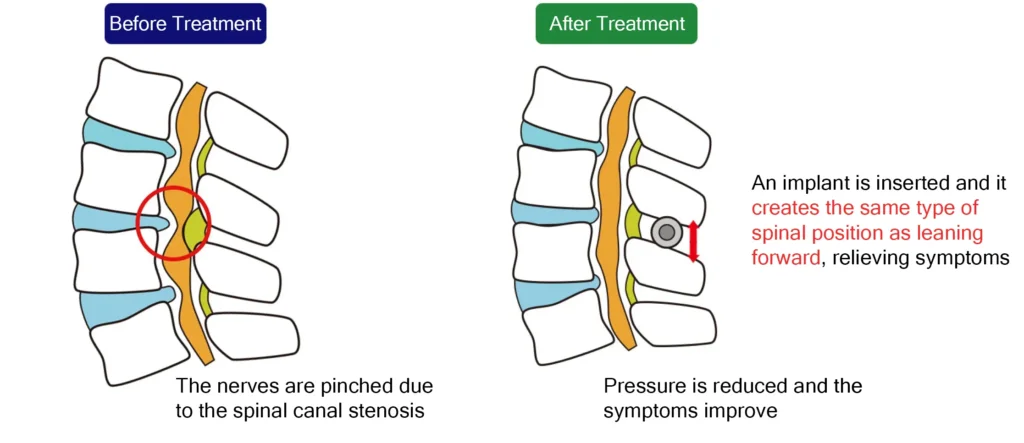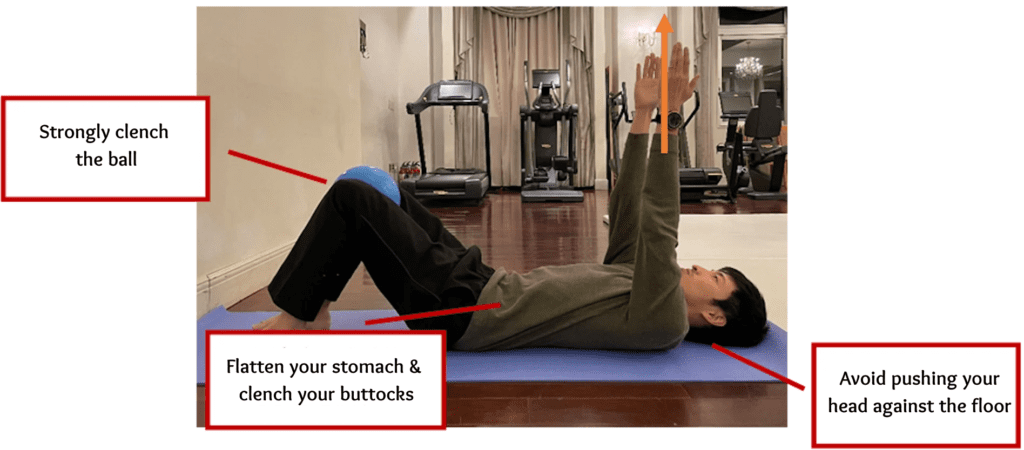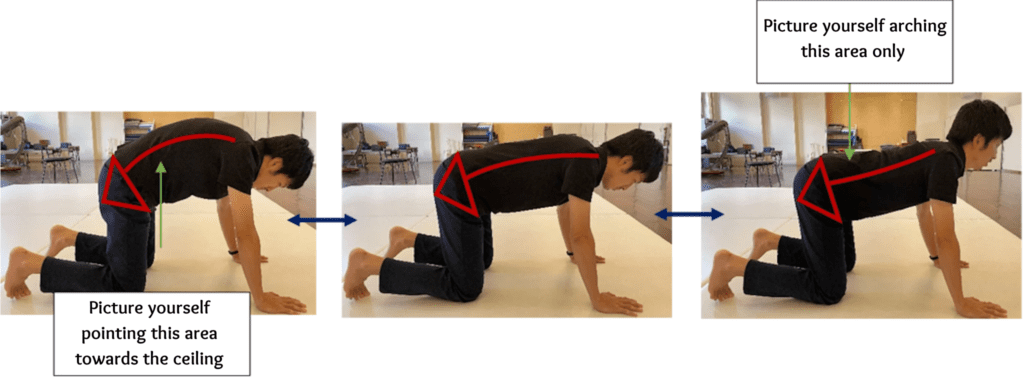Column Spinal Stenosis Surgery and Postoperative Care: How Important is Rehabilitation for the Success Rates?
Jan 31, 2025
Spinal canal stenosis, along with disc herniation, is the most common vertebral disorder.
Spinal canal stenosis causes not only back pain, but also symptoms of pain and numbness in the lower limbs and intermittent claudication (pain in the buttocks or legs that occurs when walking, eases after some rest, but becomes painful again when resuming walking), which can interfere with daily life.
In this article, we will discuss surgery for spinal canal stenosis and its subsequent rehabilitation.
Surgery for spinal canal stenosis
Lumbar spinal canal stenosis can be treated with block injections, but in most cases, surgery is preferred.
The most common surgical procedures for spinal canal stenosis are lumbar laminectomy and spinal fusion.
Lumbar laminectomy is performed under general anesthesia and using an endoscope, the skin of the back is cut open and part of the vertebral arch and hypertrophied ligamentum flavum are removed to relieve nerve compression and widen the spinal canal.
Spinal fusion is performed under general anesthesia by making an incision in the skin of the back, removing the degenerated disc, and placing a cage filled with bone taken from the hip bone to hold the vertebrae in place with screws and rods. It may be performed subsequently to a lumbar laminectomy.

Once surgery is performed for spinal stenosis, it is not uncommon for the spinal canal to narrow once again afterward, causing symptoms to recur. A high percentage (10% to 23%) of such cases require reoperation (*1).
Comorbidities also increase the incidence of postoperative complications and lengthen recovery time. The incidence of comorbidities is particularly high in elderly patients, ranging from 60% to 73.9%. (*2).
Among them, diabetes, respiratory difficulties, chronic obstructive pulmonary disease, and chronic conditions associated with the use of steroids increase the risk of postoperative complications (*3).
*1: Atlas SJ, et al. Long-term outcomes of surgical and nonsurgical management of lumbar spine stenosis: 8 to 10 year results from the maine lumbar spine study. Spine, 2005, 30(8). Kim CH, et al. Reoperation rate after surgery for lumbar spinal stenosis without spondylolisthesis: a nationwide cohort study. Spine Journal, 2013, vol.13-10.
*2: Khalepa R.V., Klimov V.S. Lumbar spinal stenosis in elderly and senile patients: problem state and features of surgical treatment. Russian journal of neurosurgery. 2017;(1).
*3: Deyo, R. A., Hickam, D., Duckart, J. P., Piedra, M. Complications After Surgery for Lumbar Stenosis in a Veteran Population. Spine. 2013;38(19).
Minimally Invasive Procedures – The Florence and Q-Florence Methods
The Florence and Q Florence methods can also be performed on spinal canal stenosis.
The Florence and Q-Florence procedures are minimally invasive, low-risk treatments for spinal stenosis.
Under partial anesthesia and sedation, a device is percutaneously inserted to widen the narrowed spinal canal.
The device is inserted to stabilize the vertebral body while retaining spinal rotation and flexion, widening the spinal canal and reducing disc protrusion and hypertrophy of the ligamentum flavum. Pain is eliminated by the expansion of the narrowed spinal canal.

The Florence and Q-Florence methods are minimally invasive and low-risk treatments, and so far there have been no reports of complications or recurrence of symptoms after the treatment.
Rehabilitation after surgery and treatment of spinal canal stenosis
Rehabilitation is equally important after both surgical and minimally invasive procedures.
Here are some rehabilitation recommendations that we recommend to do after our clinic’s spinal stenosis treatments. Being able to perform these exercises on a regular basis will reduce back pain and other symptoms and increase the overall effectiveness rate of your treatment.
Exercises that may be performed from the day after treatment
〇 Exercises to stabilize the trunk ①
Failure to stabilize the lower back while standing or walking can place strain on the intervertebral discs and surrounding tissues, making symptoms more likely to occur. This exercise is performed to stabilize the lower back during movement.
1. Lie face up with both knees up.
2. Retract your abdomen and bring your back to the floor while lightly tightening your buttocks
3. Slowly raise your arms in such a way that your back does not separate from the floor.
* Make sure your back also stays in contact with the floor when you return your arms to their initial position.

〇 Exercises to stabilize the trunk ②
1. Lie down facing up with both knees upright.
2. Place a ball or towel between both knees
3. Depress your stomach, lightly tighten your buttocks, while applying pressure on the ball with your inner thighs.
4. While in this position, slowly thrust your arms upward.
* When thrusting your arms out, be careful not to overly shove your head against the floor, and be careful that your back remains flat against the floor.

Exercises that can be done from one month after the treatment
〇 Exercises to mobilize the spine
Various muscles work in perfect balance in order to make the spine move. When back pain occurs, we tend to forget how to move these muscles correctly, and use them in an incorrect manner, which leads to poor posture and incorrect body movements. This exercise makes the muscles that control the spine move so that they can relearn how to move properly again.
1. Start on all four in a crawling position (middle image).
*Be careful not to extend your elbows too far.
2. Without overly pushing the floor with your hands, slowly round your back while imagining in your head that your navel moving towards the ceiling.
3. Lightly lower your navel, while being mindful not to bend your hips, and bend your navel back while imagining in your head that it is moving towards the floor.
* This exercise is more effective if you keep your face facing forward at this point .
4. Repeat these movements at a slow pace.

〇 Exercises to stabilize the spine & increase hip mobility
Back pain among other forms of pain can induce weakness in the core muscles. Since the trunk muscles are very important for supporting and moving the body, it is necessary to restore muscle strength through training.
Trunk muscles can be engaged in a variety of situations. This exercise provides effective core training by moving the hip joints while keeping the pelvis and trunk stable.
1. Assume a position on all four without rounding or arching the back.
2. Slowly pull your hips back while holding your posture.
Be careful not to move your pelvis or round your hips at this point.
3. Stop pulling your hips before your back becomes rounded or your pelvis moves, and return to the starting position.
* Be sure to perform this series of movements at a slow pace.

〇 Exercises to increase mobility of the spine (thoracic vertebrae)
When the mobility of the spine in the area called the thoracic vertebrae is reduced, the body becomes arched, which puts added strain on the back muscles and intervertebral discs and it is said to be a factor in lower back pain. If this area can be made to move properly, the strain on the lower back can be reduced.
- Lie on your side with your hip and knee joints bent at 90 degrees.
2. Place the upper hand on your shoulder
3. Slowly twist your upper body backward to move the joints of your spine
4. Repeat the twisting and return to the starting position slowly over and over again.

ILC also offers a specialized back pain rehabilitation program, which can be used for various types of back pain and for people of all ages.
ILC’s specialized back pain rehabilitation
If you are suffering from spinal stenosis, please consider a consultation at our clinic.
Related Articles
The Different Symptoms of Spinal Canal Stenosis: If You Have Any of These, It’s a Red Flag!
How to Spend Time after Spinal Stenosis Surgery
Is it already too late! ? What should I do about spinal canal stenosis that has been left untreated?
How to Deal with Stenosis Pain and Numbness
What are the Various Complications Possible With Spinal Stenosis?



